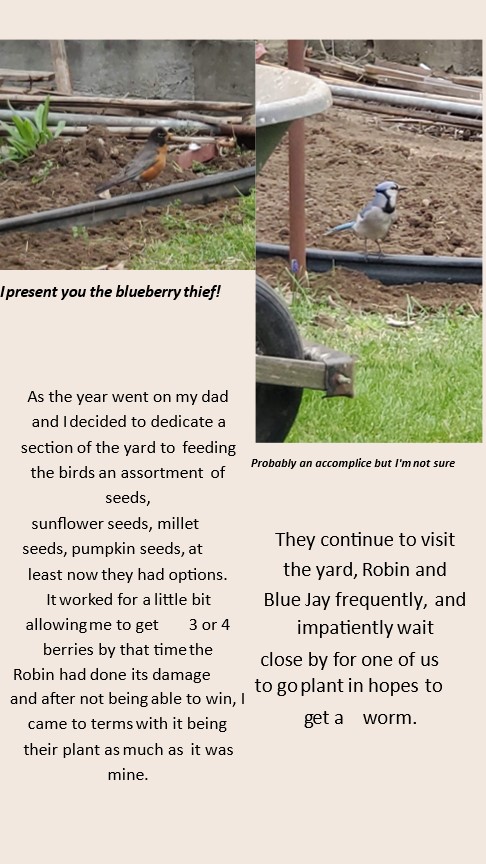This unit is fun… and a lot of work… but everyone loves it.
The truth is, much of what you’ll be doing both in classes and IRL is multi-modal, meaning you create texts that aren’t just “writing.” They also have images or audio or video, or a combination of all of that. So you’re going to have the chance to create a multi-modal project for Unit 3.
About what?
About YOU!!!

Specifically, tell us a story about your life in the past couple of years that only you can tell. In the Spring term, my class made projects about everyone’s experiences during the pandemic year. I got things like a photo essay of a student who started to garden with his father just because he was bored, and learned that birds are both interesting and terrific blueberry thieves (and he bonded with his father which he totally didn’t expect)! Another actually had documented through the year how she re-visioned her room with plants and artwork and music. Three students from Pakistan created a podcast talking about the difficulties international students specifically had because they were cut off from their families. And Jessica just rambled…
But it doesn’t just have to be about the pandemic. Last summer, a student created a powerful video that she wanted to present to the city council, arguing that EMTs need to get a raise so they make more than $15/hour. She used photos she and her co-workers had taken, and put a powerful song beneath it and some text over it. And we were all just blown away. Another student edited the videos she took of a couple of Black Lives Matter demonstrations (including the police response) she was part of — no words, but the videos told quite a story.

Not that these have to be fancy. The gardening photo essay was a simple Word doc with inserted images. A lot of students used Canva (just like I do!) to create things like an infographic of how much money one student spent while in lockdown (that student used fun horror-movie style fonts to show how not-pleased her mother was). Another photo-essay was a collage of pictures she took of her family in the house… including the night they had a campfire on a portable camp stove and made s’mores!
The tools they used ranged from fancy video editing or animation programs like Moovly, to simple Word docs or recorded PowerPoint presentations, to Audacity to create podcasts or iMovie and Videopad to create simple videos, to Canva infographics and posters and presentations.
Bottom line: they all told a very specific story about themselves — personal, professional, community. Things that mattered to them. Maybe something that changed them or their world for better or worse. Or a specific change they want to see happen and are willing to tell everyone about.
To do all of this, we’ll look at some examples of different genres (and I’ll recommend a lot more!) as well as tools you can use to create something.
How long should it be? This is a hard question to answer because everyone is writing in a different genre. But look, this unit is worth 10% of your grade, the last big assignment of the term (and no revisions except as you create it!) so it should be substantial: the equivalent of a 4-5 page paper.
You’re also going to write an Artist’s Statement when you finish the project. It’s your chance to walk us through what you did, why you made the choices you made, and how well you think it turned out (the specifics are below).
Honestly, there are very few rules for this Unit except that it be about you, that it uses a combination of at least two modes (alphabetic/words, audio, visual), and that it’s substantial in that it shows you really thought about it and put effort into telling us your story.
Write an Artist’s Statement…
…to go along with your project. Do this after you’ve completed the whole project. Think of it both as a place to reflect on what happened and what you learned during the process and as a place to make visible what is otherwise invisible: the artist’s process of choosing and creating. It should be about 750-1000 words (ballpark). There are three sections – here are the things you need to address in each one. Use “I” since you’ll be telling me what you did and why:
- Before you started:
- Describe what your purpose and goals were when you started – what you wanted your audience to know or do with the project and why.
- Explain why you chose the genre/form you did (video, photo essay, mix, etc.). What was it about that genre that you thought would help you best tell your story?
- Talk about what problems you thought you might run into, what worries you had doing something like this, or anything else you were thinking about when you were getting started.
- Getting it done:
- Take us through the process of composing this project – the good, the bad, the re-thinking, the awful…
- Describe the choices you made and why you made them. Were there technical reasons? Did you keep coming up with better ideas? Did you re-think your goal? Be specific and point to the elements you included and chose to exclude, how you put them together, etc.
- Now that it’s done:
- Talk about what you think is good about the final product, AND what you think you might have done better… and why.
- Also talk about what you would consider the perfect or specific conditions where people would experience your product.
*NOTE: This should be a fluid narrative that takes us chronologically through the process of making your Unit 3 project. Don’t simply answer the bullet points.
Now go to the Schedule page to find the video lecture, handouts, links etc for Unit 3.
Print this page


